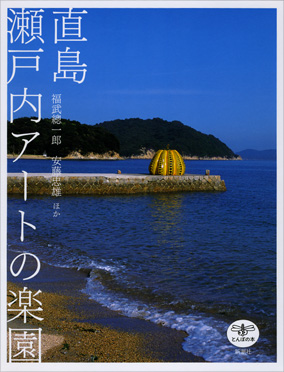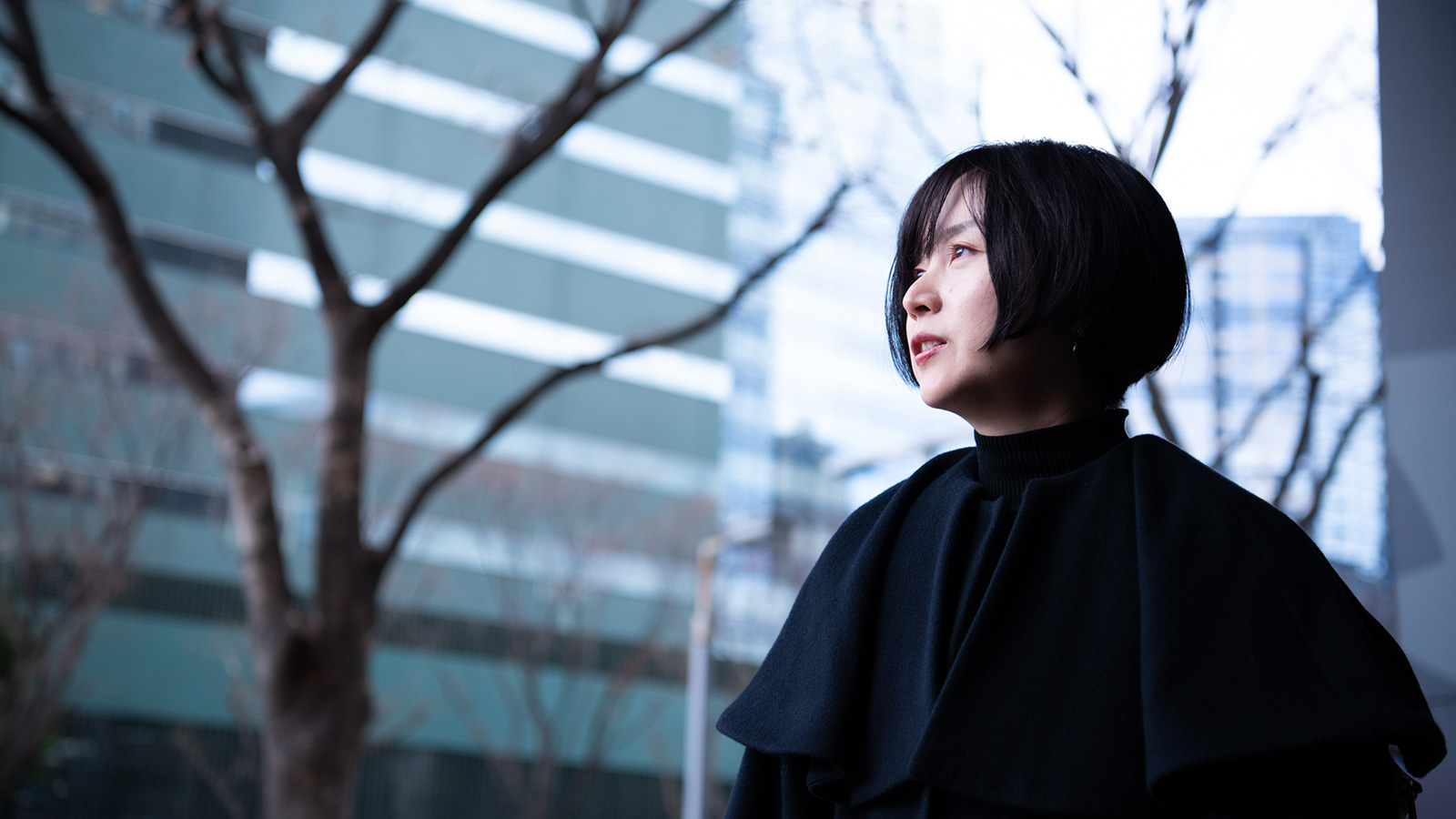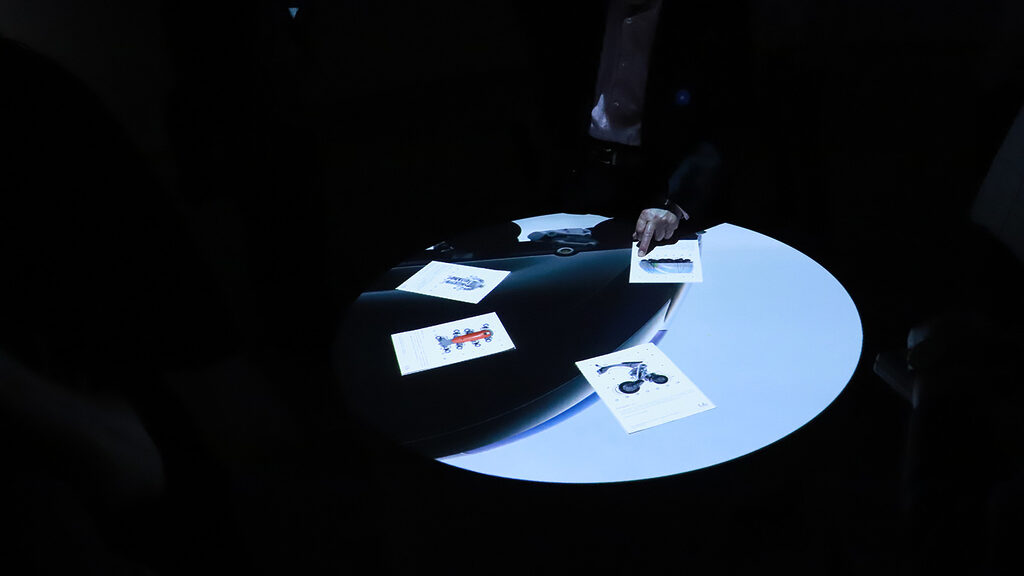
There is no clear-cut correct interpretation of a work.
Explore R&D stories from the art/design field
In this series, we plan to introduce "museums that engineers should visit" at the rate of about one per month, but before that, here is a brief explanation of why engineers should visit museums...
2024/05/06
Posted on 2024/05/06
The publication of "Why Do the World's Elite Train Their Aesthetic Senses? ("Art" and "Science" in Management, by Shu Yamaguchi, Kobunsha, 2017), the terms "design thinking" and "art thinking" have become popular in the business scene, especially in the new business development domain. Unlike the buzzwords that tend to become clichéd and ricocheting around the I T industry, this invites us into extremely essential discussions, and at the same time, it is a very effective means of searching for R&D material.
In this series, we plan to introduce "museums that engineers should visit" at a pace of about one per month, but before that, we will briefly explain "why engineers should visit museums.
Art presents unknown questions.
The fascination of art is that it teaches us things that we could not perceive before. In his book "Art Thinking: How to Enhance People's Happiness through Business and Art," Takeshi Akimoto, director of the 21st Century Museum of Contemporary Art, Kanazawa, and numerous other museums, likens artists to "canaries in a coal mine. Akimoto says, "They are the first to see what many people cannot yet see with their own eyes, to hear what they cannot yet hear, and to communicate what cannot be expressed in language in the form of shapes and images.
Artists are sensitive to changes in the world and ask questions through their artwork. In other words, if we can unravel the original theme of the artwork, we can apply it to cutting-edge research and development material.
Inujima Seirensho Museum of Art with an awareness of a recycling-oriented society
To Inujima, a small island in the Seto Inland Sea,Inujima Seirensho Art MuseumThe museum is an exquisite fusion of architecture and art. This museum is an exquisite fusion of architecture and art, created by preserving and rehabilitating the remains of a copper smelter that operated for only 10 years from 1909. The museum exhibits artworks inspired by the novelist Yukio Mishima, who warned against Japan's modernization, in the midst of Japan's modern industrial heritage. The museum also uses soaring chimneys and sunlight to create air flow for ventilation, mirrors to reflect natural light for illumination without the use of electricity, and visitor excrement to feed the surrounding plants. This museum makes us think about what modernization has left behind and what the future holds.
Many of you may be thinking, "Yes, yes, that's what sustainability is," after the adoption of the 2030 Agenda for Sustainable Development at the United Nations Summit in September 2015. However, the Inujima Seirensho Museum of Art opened in 2008, before people started talking about "sustainability" in a loud voice. The Inujima Seirensho Museum of Art opened in 2008, before people started talking about "sustainability" in a loud voice. In other words, this project has been in the works for nearly 30 years. Of course, the issues of modernization and the environment were probably one of the most important themes at the time, but it was a very prescient move to have the concept of the Inujima Seirensho Art Museum coincide with that of the current era. In this way, a portent of the future is latent in the artwork.
The boundary between art and design is a gradation
Now that we have talked about "art," what about "design" as mentioned in the title of this series? One question that needs to be resolved here is "What is the difference between art and design?" problem. I am often asked this question, and my conclusion is: "The boundary is not clear, so don't worry too much about it.
A common explanation for the difference between art and design is that art is an expression of an artist's personal vision, while design is a calculable definition made for someone else. However, there are many works that cannot be divided in this way, and in recent years the boundaries have become particularly shaky.
Mr. Akimoto, while stating that "design thinking is problem-solving thinking to obtain the optimal solution for the user, while art thinking is characterized by creating the problem of what the problem is in the first place and starting from the question of what the problem is," he adds that "design that raises problems by solving problems is beginning to be advocated. Design that poses a problem from solving a problem is beginning to be advocated". In other words, while the boundary definitions between the two types of thinking can be clearly defined, the actual works are becoming blurred.
Art/design specialists may be required to distinguish between the two. However, for those of us who appreciate art for the purpose of finding material for research and development, I believe that it is better to "look at what raises issues without being bound by any particular field," as it allows us to encounter a wide variety of artworks and people. For this reason, in this series, we will look for material for research and development in both art and design.
If it's an issue-based work, follow the latest art/design.
First of all, where can you find artwork that raises issues? The quickest way is to go to a place that introduces you to the latest art/design. In the art world, this is called contemporary art, and is generally referred to as modern art. The reason why you should stick to the "latest art/design" is that, of course, the themes are fresh, and the creators are still alive or have lived at the same time as you, so it is easier to understand the background of their works.
By the way, when I say "contemporary art," I am often asked (at least by me), "Picasso?" However, Picasso's work is more like modern art, a little before the modern era. Of course, there are works that raise issues in modern art. However, since they are from the past, many of them are difficult to interpret unless you have some knowledge of the historical background and art history. Therefore, as a starting point, we recommend that you focus on the latest art and design, which can be easily interpreted in a contemporary sense.
As for facilities where one can encounter the latest art/design, for example, in the Tokyo area,Museum of Contemporary Art Tokyo, ,Mori Art Museum, ,21_21 DESIGN SIGHTThese are the major ones. (There are many more, too numerous to list, but we will get to them in a series of articles!)
The point of appreciation is not to seek the correct interpretation.
Next, a few words of caution regarding the appreciation of artworks. At the very least, it is necessary to have an attitude of not seeking a clear-cut linguistic answer to the interpretation of a work of art. This is especially true when it comes to art. It is sometimes difficult to give a one-question quiz because it is difficult to explain with today's vocabulary, or because it has multiple meanings. (I enjoy diving into the ocean of thought, trying to figure out what is right and what is wrong in the absence of a definitive answer.)
With this attitude, when I confronted art/design works, I could understand them without anyone's explanation, or I could say, "I can't put it into words, but it really touched my heart. I can't put it into words, but it really resonated with me, and I wonder why my heart was moved. I can't put it into words, but it really resonated with me. It is a sign that you have been able to interpret the work in your own way. However, to be honest, there may be times when you cannot understand a work at all. It's hard to get a sense of the work even after reading the description of the work. Don't worry. It happens to me too. However, if you abandon the effort to understand, nothing will progress. So, in my case, I take the following approach.
(1) Break down the work in 5W1H with observation
The following aspects of the work are extracted: "When: when and in what historical context," "Where: where and what happened," "Who: who, who and for whom," "What: what and why," "Why: why and what is the motivation," and "How: how (work materials, process, collaborators, etc.). Extract the characteristic parts of the work.
(2) Interpret the work abstractly and try to connect it with your own experience and knowledge.
Once you have deconstructed and understood a work of art, try to recognize it in a more abstract class. For example, if "glass" is used as a material for a work of art, we think of it as "transparent," "sparkles when you shine light on it," and so on. It is a so-called association game. I open the drawer of my memory and look for pieces of experience and knowledge that I can link to the work. In this way, you may be able to see the work from a different perspective.
(iii) Talk to someone and share your thoughts.
It is also highly recommended to watch a film while chatting (conversing) with someone. Since there is no right answer in interpreting a work, it is even better if you have someone with you with whom you can frankly talk about trivial matters. It is interesting to note that a child who has no preconceived notions and gives you his or her impressions based on intuition can actually be a good partner.
(4) Relax
To begin with, if you are nervous and stiff-headed, your brain will not work. If you like, please watch the show with a splash of alcohol (to the extent that it does not bother those around you) beforehand.
Don't be ashamed if you don't understand everything.
Even with this approach, if you can't understand it, you can't do it. That is inevitable. For example, it is difficult to truly understand all the works in a special exhibition at a museum. You should view the works with an open mind, thinking that you will be lucky if you find one of your favorites among them. Do not put yourself or the artwork down because you do not understand it, but rather keep it in the bottom of your memory and say, "I hope I will understand it someday.
reference book (work)

Art Thinking--How Business and the Arts Can Enhance People's Happiness
Author:Yushi Akimoto
Publisher: President, Inc.
Release date: 10/31/2019

Naoshima, Setouchi Art Paradise
Author: Soichiro Fukutake, Tadao Ando, and others
Publisher: Shinchosha
Release date: Aug. 31, 2011

Masayo Yaso
Manager, Corporate Planning Department, Information Technology Development, Inc.
Graduated from Waseda University, Faculty of Letters I with a specialization in Art History, and received an MBA from the Graduate School of Business Administration (Waseda Business School), Waseda University. After working in technical research departments, new business teams, and marketing/promotion planning positions, he assumed his current position, concurrently serving as editor-in-chief of "Schrodinger's Wednesday" from April 2024.





